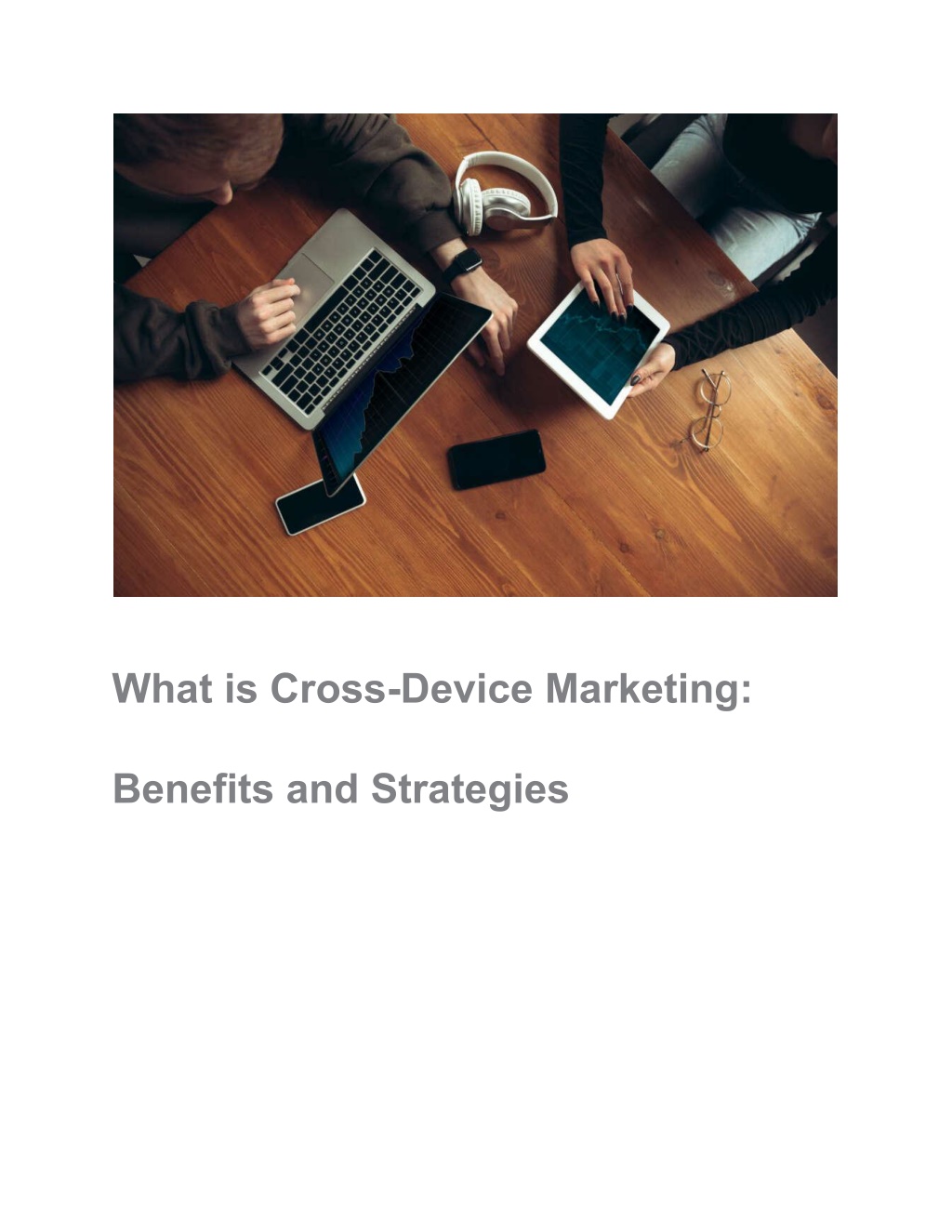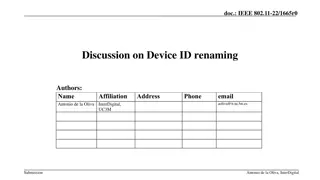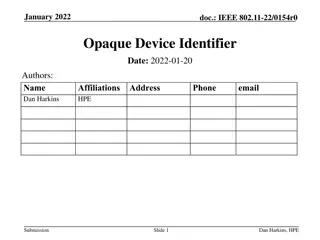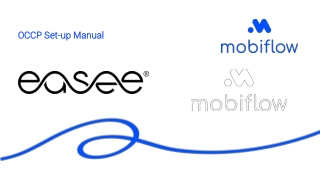
What is Cross-Device Marketing_ Benefits and Strategies
In todayu2019s digital age, consumers engage with multiple devices throughout their buying journey. From smartphones to desktops, tablets to smart TVs, they expect a seamless experience regardless of the platform they use. This is where cross-device
Download Presentation

Please find below an Image/Link to download the presentation.
The content on the website is provided AS IS for your information and personal use only. It may not be sold, licensed, or shared on other websites without obtaining consent from the author. Download presentation by click this link. If you encounter any issues during the download, it is possible that the publisher has removed the file from their server.
E N D
Presentation Transcript
What is Cross-Device Marketing: Benefits and Strategies
Cross-device marketing involves reaching and engaging consumers across multiple devices such as smartphones, tablets, laptops, and desktops. This approach acknowledges modern consumers tendency to switch between devices throughout the day. Key Aspects: User Experience Consistency: Ensures a seamless experience when users switch devices. Data Tracking: Utilizes sophisticated tracking methods to follow consumer behavior across devices. Personalization: Tailor s messages are based on the device being used and user behavior. Implementing cross-device marketing effectively can lead to increased engagement, higher conversion rates, and improved customer satisfaction. The Importance of Cross-Device Marketing Cross-device marketing enables businesses to reach consumers across multiple devices, creating a seamless experience. This approach acknowledges that consumers use various devices throughout their journey, from smartphones and tablets to laptops and smart TVs. By leveraging cross-device strategies, marketers can:
Enhance user experience: Provide a consistent brand message across all devices. Improve targeting: Gain deeper insights into consumer behavior, enabling more accurate targeting. Increase engagement: Foster higher interaction rates by reaching users on their preferred devices. Boost conversions: Drive higher conversion rates by maintaining continuity in the marketing message. Optimize spending: Make data-driven decisions to allocate resources efficiently. How Cross-Device Marketing Works Cross-device marketing leverages data from various devices to craft cohesive marketing experiences. Marketers gather information and track user behavior across smartphones, tablets, desktops, and connected devices. This data is then analyzed to create targeted advertising and personalized content. Key Components: 1. Data Collection: Utilizes cookies, device IDs, and other tracking technologies. 1. User Identification: Matches user data from different devices to a unified profile. 1. Segmentation: Groups users based on behavior, preferences, and device usage. 1. Personalization: Delivers tailored content and ads to users across devices. 1. Analytics: Measures campaign effectiveness and optimizes strategies accordingly. Investing in cross-device marketing tools enhances targeting precision and boosts platform user engagement.
Key Benefits of Cross-Device Marketing Cross-device marketing offers several significant advantages for businesses aiming to enhance their digital marketing efforts. Enhanced Customer Experience: It enables seamless interactions across multiple devices, ensuring a consistent user experience. Improved Attribution Insights: Marketers can more accurately track customer journeys, attributing conversions to the right touchpoints. Increased Engagement: Personalized content across different devices increases user engagement and retention. Higher Conversion Rates: By providing a cohesive experience, businesses can drive higher conversion rates through targeted marketing efforts. Optimized Ad Spend: Detailed insights allow marketers to allocate budgets more effectively, reducing wasted ad spend. Better Customer Retention: Consistent messaging helps in building stronger relationships, leading to improved customer loyalty. Challenges in Cross-Device Marketing Despite its benefits, cross-device marketing presents several challenges: 1. Data Privacy and Security: With increasing concerns about data privacy, tracking users across devices can be complicated. Brands must navigate regulations such as GDPR and ensure that they are
transparent about how they collect and use consumer data. 1. Accurate User Identification: Identifying users across multiple devices accurately can be difficult, especially when relying on probabilistic matching. Mistakes in user identification can lead to irrelevant marketing messages, which can frustrate consumers and reduce the effectiveness of the campaign. 1. Integration Across Platforms: Implementing a cross-device marketing strategy requires the integration of data and technology across different platforms and devices. This can be technically complex and requires a coordinated effort across different departments within a company. 1. Measuring Success: Measuring the success of cross-device marketing campaigns can be challenging, as it involves tracking user behavior across multiple touchpoints. Brands need sophisticated analytics tools and methodologies to accurately assess the impact of their campaigns. Enhancing Customer Experience Cross-device marketing significantly enhances the customer journey by delivering a consistent and personalized experience across multiple devices. This method ensures that users receive relevant and timely messages regardless of whether they are using a smartphone, tablet, or desktop.
Consistent Messaging: Helps maintain a unified brand voice across platforms. Personalization: Leverages data from various devices to offer tailored recommendations. Seamless Transition: Allows users to switch devices without losing their place in the browsing or purchasing process. Better Engagement: Increases interaction rates by providing content tailored to the device in use. Comprehensive Analytics: Offers insights into user behavior across devices, refining marketing strategies. Increasing Engagement Rates Cross-device marketing empowers brands to engage with consumers seamlessly across multiple devices. By targeting users on smartphones, tablets, and desktops, brands ensure a consistent and personalized experience. Key strategies include: Personalized Content: Tailoring messages based on browsing behavior and device preferences enhances relevance. Timing: Delivering messages when users are most active on a particular device increases engagement likelihood. Consistent Messaging: Maintaining a unified brand message across all devices builds trust and recognition. By leveraging these strategies, brands can effectively boost engagement rates, fostering deeper connections with their audience across all platforms. Improving Campaign Performance Metrics To enhance cross-device marketing efforts, precise performance metrics must be monitored.
Identify Key Performance Indicators (KPIs): Engagement rates, conversion rates, and customer acquisition costs should be tracked across all devices. Utilize Advanced Analytics Tools: Tools like Google Analytics, Adobe Analytics, and Facebook Analytics offer extensive cross-device tracking and reporting capabilities. Segment Audience Data: Separate analysis by device types to understand user behavior patterns. Optimize Campaigns Continuously: Regularly tweak ads and messages based on metrics to ensure effective performance across different devices. A/B Testing: To find out which creative components work best on each device, run A/B testing. Maximizing the return on investment from cross-device marketing requires precise tracking and adjustment. Essential Strategies for Effective Cross-Device Marketing Marketers must understand user behavior across devices to craft cohesive campaigns. Techniques include: 1. Unified Customer Profiles: Merge data from different devices to create a singular, holistic view of the customer. 1. Consistent Messaging: Ensure brand messaging remains uniform across all channels and devices. 1. Cross-Device Tracking: Use sophisticated tracking systems to monitor user movement between devices. 1. Personalization: Present personalized content based on user behavior and preferences. 1. A/B Testing: Test various cross-device strategies to determine effectiveness.
1. Data Integration: Leverage integrated data solutions to streamline insights and actions. Data Collection and Analysis Cross-device marketing relies heavily on data collection and analysis to understand user behavior across multiple devices. Key methods for data collection include: Tracking Cookies: Small files stored on devices to monitor user activity and preferences. Device Fingerprinting: recognizing devices by their distinct features, like browser type, operating system, and screen resolution. User Authentication: Using login credentials to track user behavior across different devices and sessions. Analyzing this data provides valuable insights into user journeys, preferences, and engagement patterns. Marketers use this information to optimize advertising strategies, enhance user experience, and improve conversion rates by targeting the right audience at the right time on the right device. Personalization and Targeting Cross-device marketing excels in personalizing and targeting campaigns effectively. By integrating data from various devices, marketers can build comprehensive user profiles, allowing for precise audience segmentation. This facilitates: Tailored Content Delivery: Personalized messages increase engagement by addressing user-specific needs and preferences. Improved Customer Experience: Consistently relevant content across devices enhances user satisfaction and brand loyalty.
Enhanced Campaign ROI: Targeted ads reduce wastage and increase conversion rates, optimizing budget spend. Data-driven personalization helps create seamless, impactful interactions that resonate with users, driving higher engagement and brand loyalty across touchpoints. Optimizing Ad Creatives for Multiple Devices To effectively engage users across various devices, marketers must ensure ad creatives are versatile and responsive. Key practices include: Responsive Design: Ensure creatives automatically adjust to different screen sizes and orientations. High-Resolution Assets: Use high-quality images and videos to maintain clarity on all devices, from smartphones to tablets. Simplified Messaging: Convey messages clearly and concisely to accommodate smaller screens. Consistent Branding: Maintain brand consistency in colors, fonts, and logos across all device formats. A/B Testing: Continuously test different versions of creatives on multiple devices to identify the most effective variations. Leveraging Cross-Device Attribution Cross-device attribution allows marketers to understand the customer journey across multiple devices. By tracking interactions on smartphones, tablets, and desktops, businesses can gain a holistic view of consumer behavior. Key strategies include: Data Integration: Combine data from various channels to create a unified customer profile.
Tag Management: Use tags to track user activity across different devices. User Identification: Implement methods to recognize users across devices, such as device fingerprinting or user login data. Analytics Tools: Utilize advanced analytics platforms to analyze cross-device interactions. A/B Testing: Perform tests to optimize campaigns based on cross-device performance metrics. These strategies enable precise targeting and more effective marketing campaigns. Challenges and Solutions in Cross-Device Marketing Significant obstacles to cross-device marketing include fragmentation of devices, privacy concerns of users, and consistent monitoring. Marketers must ensure seamless user experiences across various devices and touchpoints. Challenges: 1. Device Fragmentation: Diverse screen sizes and platforms. Complex user journeys. 1. Tracking and Measurement: Synchronizing user data. Accurate attribution models. 1. Privacy Regulations: GDPR and CCPA compliance. Balancing personalization and privacy. Solutions:
1. Unified Customer ID: Centralized data systems. Consistent identifiers. 1. Advanced Analytics Tools: Cross-device customer journeys. Enhanced attribution. 1. Adherence to Privacy Laws: Transparent data practices. Opt-in strategies. Successful Case Studies Starbucks Challenge: Increase mobile engagement. Strategy: Unified loyalty program across devices. Result: 11% increase in mobile payments, 9% higher customer retention. Nike Challenge: Enhance personalized marketing. Strategy: Cross-device data synchronization for tailored ads. Result: 30% higher click-through rates, a 20% rise in online sales. Netflix Challenge: Boost streaming consistency. Strategy: Seamless user experience from mobile to TV. Result: 15% increase in user watch time, 10% growth in subscriptions. These case studies highlight the impact of cross-device marketing in enhancing user engagement, personalization, and retention.
Conclusion and Future Outlook Cross-device marketing continues to evolve with advancements in technology and data analytics. Businesses must: Invest in sophisticated tracking tools to gather accurate user data. Stay updated with privacy regulations to ensure compliance. Leverage AI and ML for predictive analytics and personalized experiences. Future trends may include: 1. Enhanced device synchronization capabilities. 1. Increased reliance on data-driven marketing strategies. 1. Broader integration of IoT devices, providing richer user insights. Companies that adapt to these trends will likely gain a competitive edge, driving higher engagement and conversion rates across diverse digital touchpoints.















































